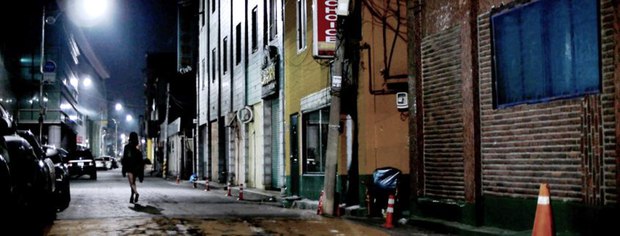Artificial intelligence meets emotional intelligence in VR
I risk dating myself with a shout out to The Eurythmics and Aretha Franklin's 1985 hit single: "Sisters Are Doin' It For Themselves" – by bringing creativity, insight and emotional intelligence to virtual reality, in a dude-dominated domain, VR pioneers such as Brenda Laurel, Jessica Brillhart and Maureen Fan have broken new ground while setting examples for men and women alike.
At the Busan International Film Festival's VR Forum, I had the pleasure of speaking in a program featuring three remarkable immersive media creators: Narae Kim, Jiyoung Kang and Kaoru Naito.
With virtual reality currently beholden to gaming and spectacle, it was refreshing to see female artists focused on designing emotional interactions with emotional intelligence.
Narae Kim is a native of Seoul, Korea, currently living and working in Los Angeles. A CalArts MFA graduate (and former student of my old friend Michael Scroggins), Narae is a multi-media artist working across physical and virtual spaces. After beginning her career in theatrical scene design and installation art, Narae co-founded the data-driven VR startup Tamade, where she serves as chief creative officer.
One of Tamade's most notable works is Pippa’s Pan, an expressionist immersive environment billed as "the first room-scale motion capture VR experience," on which Narae worked as art director and associate producer. Pippa’s Pan immerses the user in a rich environment that elicits emotions while avoiding the "Uncanny Valley" of realistic digital representation. Narae believes in creating environments for "user-driven storytelling", where users are creative collaborators and in which there is no right or wrong way to experience the work.
Narae observes, "Pippa's Pan takes you through the forest of Pippa's mind to help re-capture fragments of her forgotten memories. Pippa’s Pan experiments with world-building, motion-capture and animation techniques, spatial audio and light field technology. It's VR's first hybrid live-action short." Pippa’s Pan was showcased at Cannes this year, and was also voted "Top Entertainment Pick" in the AT&T Developer's Summit's VR/AR Challenge at CES 2017.
Forum coordinator Jiyoung Kang is an award-winning South Korean media artist and Professor at Dankook University, with degrees in computer graphics from Pratt and interactive telecommunications from New York University, along with a PhD for her research on emotional interaction at the Korea Institute of Advanced Science and Technology. Jiyoung's teaching, research and creative work sits at the convergence of VR and AR technology, with a particular focus on emotional impact.
One of the most powerful projects Jiyoung has produced is Bloodless, a ten-minute VR film that traces the last living moments of a sex worker who was brutally murdered in 1992 by a U.S. soldier from the Camp Casey military base in Dongducheon, South Korea. Directed by Gina Kim and shot at the location of the crime, Bloodless gives VR viewers a chilling experience with intimations of the horror that took place. By portraying the last moments of the victim's life in the camp town, Bloodless converts an abstract news item into a personal experience, applying the power of VR as an "empathy machine."
Bloodless won the Best Virtual Reality Story award at the 74th Venice International Film Festival. Yijoung most recent project, .FLY, which she produced and co-directed, was shown in this year’s Busan International Film Festival VR Theater.
Kaoru Naito was born in Kamakura, Japan, and graduated from Keio University. Kaoru worked as the VR director of the digital cultural division of a Japanese company. Her interest in the narrative potential of immersive media and her long-time love of art and animation inspired her to blaze her own trail as an independent VR animator. Kaoru's first VR short film, The Philosopher’s Apple, is a charming example of her philosophy to "make unique worlds that big companies can't."
Kaoru's areas of interest in VR include building fantasy scenarios, facilitating emotional connection with the characters, and exploring innovative tools. Regarding the process of making The Philosopher’s Apple, Kaoru explains: "I had to change my thinking from creating compositions to creating dioramas." Eschewing traditional storyboarding and editing, she cleverly drew upon amusement parks for her storytelling structure. On the technical side, Kaoru observed, "VR technology is progressing at an amazing speed. What I couldn't solve yesterday, came to be solved today by useful tools that were released. I was helped by the speedy evolution. This is a wonderful period for creators who desire to make their own VR content."
The Philosopher’s Apple was released earlier this year, and has been distributed online, in internet cafes, museums and planetariums. Kaoru also applies an artistic transmedia approach which includes hand-painting her own cardboard headsets and producing comic books with processed frames saved from particular views of the VR short film. Nevertheless, Kaoru notes, "It is not easy to distribute VR at this stage. The main VR users are early adopters, mostly game players. An important issue is how to reach non-VR users."
I hope that youngsters like my daughter, seeing accomplished women such as these working in art and technology, will grow up free from preconceptions of what is or isn't possible.


















